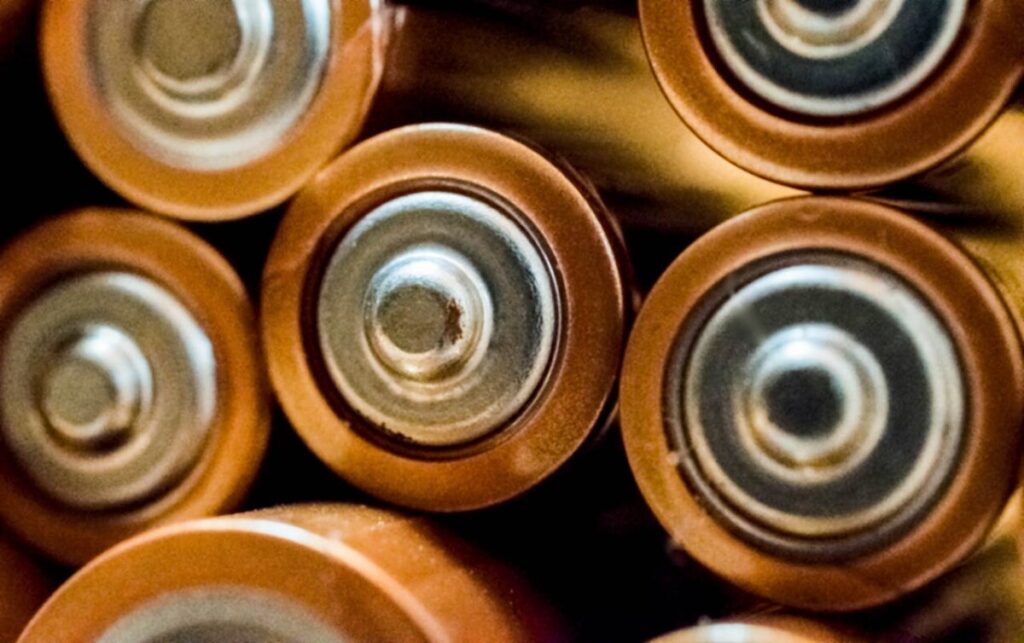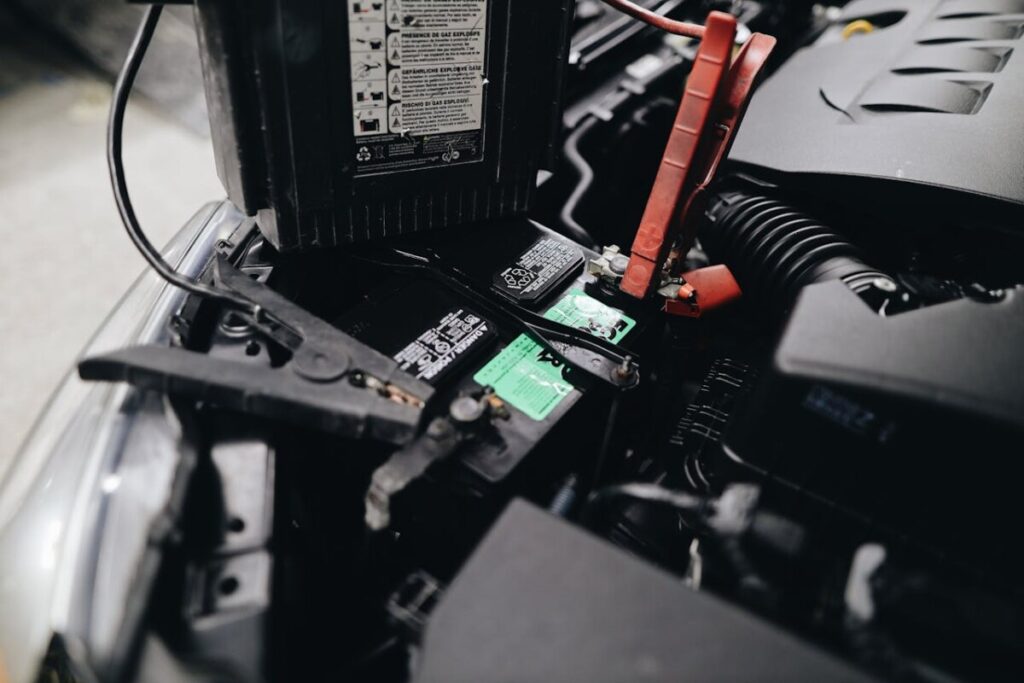
Unit for Potential Energy
The unit for potential energy is a fundamental concept in physics, representing stored energy within an object due to its position or configuration.
Whether in a gravitational field, an elastic system like a spring, or within an electric field, potential energy plays a crucial role in energy transformations and the movement of objects.
Understanding the unit for potential energy, as well as the different forms it can take, is essential for grasping how energy works within the universe.
Potential energy differs from kinetic energy, which is the energy of motion. Instead, potential energy arises from forces acting on an object. Such as the force of gravity or the elastic forces in a stretched rubber band.
Each form of potential energy depends on the object’s position or configuration relative to other objects.
Like a mass positioned at a height above the earth’s surface or an electric charge within an electric field.
What is Potential Energy?

Potential energy refers to the energy stored in an object as a result of its position relative to other objects.
This stored energy has the potential to be converted into kinetic energy, leading to movement. For instance, when a ball is held above the ground, it possesses gravitational potential energy. Due to its position relative to the earth’s surface.
Similarly, a spring compressed or stretched stores elastic potential energy, while a charged particle within an electric field stores electrical potential energy.
The unit for potential energy is the same as the unit for all forms of energy: joules (J). Joules measure the amount of work done or energy transferred when a force moves an object over a distance.
In terms of potential energy, this measurement is used to express how much energy is stored in an object due to its position or configuration.
Types of Potential Energy
Gravitational Potential Energy
Gravitational potential energy is the energy an object possesses because of its position within a gravitational field.
The higher the object’s position above a reference point, such as the surface of the earth, the more gravitational potential energy it stores.
This form of energy depends on the mass of the object, the height of the object, and the gravitational field strength. The following equation is used to calculate gravitational potential energy:PE=mghPE = mghPE=mgh
Where:
- PEPEPE represents the potential energy in joules
- mmm is the mass of the object in kilograms (kg)
- ggg is the gravitational acceleration (typically 9.8 m/s29.8 \, \text{m/s}^29.8m/s2 on the surface of the earth)
- hhh is the height of the object above the reference point
Related Post: Unveiling the Power of Gravitational Potential Energy
Elastic Potential Energy
Elastic potential energy is stored when an object, such as a spring or a rubber band, is stretched or compressed. This energy depends on the object’s configuration and the spring constant of the material.
The greater the stretch or compression, the more elastic potential energy is stored. This form of energy is governed by Hooke’s Law, where the force of gravity acting on an object is replaced by the elastic forces exerted by the spring or rubber band.
The Importance of the Unit for Potential Energy
The unit for potential energy not only allows scientists to quantify how much energy is stored in an object but also aids in understanding energy transformation processes.
For example, when an object falls, its gravitational potential energy is converted into kinetic energy, demonstrating the conservation of energy principle.
Electrical Potential Energy

Electrical potential energy arises from the interaction between electric charges. When a charged particle is placed within an electric field, it possesses potential energy based on its position relative to other charges or the potential difference between two points, such as battery terminals.
The work required to move a charge in the field determines the amount of electrical potential energy.
One of the most common examples of electrical potential energy is found in a car battery or motorcycle battery, where the energy stored in chemical form can be converted into electrical energy to power a vehicle.
The unit for potential energy in these systems remains the joule, but sometimes electrical potential is expressed in volts, as per the concept of voltage.
A charge moving between two points of different voltages can store electrical energy. And the familiar term voltage represents this potential difference.
How Potential Energy Relates to Other Forms of Energy
Potential energy is closely related to other types of energy, such as kinetic energy, which represents the energy of motion.
When an object moves from a state of rest, potential energy is often transformed into kinetic energy.
For example, a ball that is dropped from a height converts its gravitational potential energy into kinetic energy as it falls toward the ground.
This transformation of energy highlights the conservation of energy principle, where the total energy of a system remains constant, although it may change forms.
Similarly, electrical systems like batteries store energy in potential form, which is converted into kinetic or mechanical energy when needed.
A moving car, for instance, depends on the conversion of stored energy within its battery into motion.
Measuring the Unit for Potential Energy: Joules
The standard unit for potential energy in the International System of Units (SI) is the joule. This unit of energy applies to all forms of potential energy, whether gravitational, electrical, or elastic.
A joule is defined as the amount of energy transferred when a force of one newton moves an object one meter in the direction of the force.
Therefore, the si unit of potential energy is consistent across different physical systems, providing a universal measure for energy storage and transfer.
Another unit sometimes used in specific fields, particularly in atomic or molecular systems, is the electron volt (eV).
This smaller unit measures energy on a microscopic scale and is often applied when dealing with the electrostatic force between charged particles or in chemical energy calculations.
Calculating Potential Energy
To determine the potential energy of an object, specific formulas are used depending on the form of energy in question.
For gravitational potential energy, the formula PE=mghPE = mghPE=mgh calculates how much energy is stored based on an object’s mass, height, and the gravitational acceleration.
For electrical potential energy, the calculation involves the charge and potential difference:PE=qVPE = qVPE=qV
Where:
- qqq represents the unit charge in coulombs
- VVV is the potential difference in volts
In both cases, the result is expressed in joules, reflecting the amount of stored energy available for conversion into kinetic or other forms of energy.
These calculations are essential when determining how much energy can be harnessed for practical purposes. Such as powering electrical devices or predicting the behavior of objects in motion.
Common Forms of Potential Energy
- Gravitational Potential Energy: Energy stored due to an object’s position relative to a reference point, such as the earth’s surface.
- Elastic Potential Energy: Energy stored in objects that are stretched or compressed, such as springs or rubber bands.
- Electrical Potential Energy: Energy stored due to the position of a charge within an electric field or between charged battery terminals.
- Chemical Potential Energy: Stored energy within chemical bonds, often released during chemical reactions.
- Magnetic Potential Energy: Energy stored in a magnetic field, such as within a magnetic field or coil.
The Role of Potential Energy in Everyday Life

Potential energy plays a vital role in various practical applications. It is present in nearly every system where energy is stored and later used for mechanical work.
Whether it’s the stored energy in a moving car, the electrical systems that power homes, or the elastic potential energy in rubber bands.
Understanding potential energy allows for more efficient energy use and the development of technologies that harness stored energy effectively.
In many daily situations, from climbing a hill (where gravitational potential energy increases) to using a battery (where electrical potential energy is converted into other forms), potential energy is at work.
Learning to calculate and measure this energy with the unit for potential energy, the joule, helps in recognizing how much energy is available for work and how it can be transformed.
Learn How Potential Energy is the Energy of Change
Unit for Potential Energy Frequently Asked Questions
What is the unit for potential energy?
The unit for potential energy is the joule (J). The same unit used for all types of energy in the International System of Units (SI).
How is gravitational potential energy calculated?
Gravitational potential energy is calculated using the formula PE=mghPE = mghPE=mgh. Where mmm is the mass of the object, ggg is gravitational acceleration, and hhh is the height above a reference point.
Can potential energy be negative?
Yes, potential energy can be negative, depending on the chosen reference point. For example, potential energy can be negative when measured relative to a point above the object in a gravitational field.
What are the different forms of potential energy?
Potential energy exists in several forms, including gravitational, elastic, electrical, chemical, and magnetic potential energy.
Why is the unit for potential energy important?
The unit for potential energy, the joule, is essential for quantifying the amount of energy stored in a system. And understanding how energy transformations occur.
Conclusion
The unit for potential energy is a key concept in physics, allowing us to understand and quantify the stored energy within objects.
Whether dealing with gravitational potential energy, elastic potential energy, or electrical potential energy, recognizing the joule as the unit of measurement helps in calculating and applying energy in various fields.
Potential energy, in all its forms, plays a significant role in both everyday situations and complex scientific systems, ensuring the conservation of energy and facilitating energy transformations
Potential Energy and the Conservation of Energy
The concept of conservation of energy is fundamental to understanding how potential energy functions in the universe.
According to this principle, the total energy in an isolated system remains constant, although energy may change forms.
For example, gravitational potential energy can be converted into kinetic energy when an object falls, and electrical potential energy stored in a battery can be transformed into light or heat when powering a device.
Throughout these processes, the unit for potential energy remains the joule, ensuring consistency in energy measurement.
In practical terms, energy conservation means that no energy is lost. But rather it is transformed from one form to another.
When considering systems that include potential energy, such as a moving car or an object lifted above the ground, the potential energy at one point becomes kinetic energy at another.
These transformations are at the core of countless applications, from mechanical systems to electrical circuits.
Exploring Different Forms of Potential Energy

Understanding the various forms of potential energy allows for a deeper appreciation of how energy functions in different contexts.
Each form of potential energy relates to a specific kind of force acting on an object. Whether it’s the force of gravity, elasticity, or electrical fields.
Gravitational Potential Energy
Gravitational potential energy is perhaps the most commonly encountered form. As it directly relates to the objects we see every day.
When an object is elevated above the earth’s surface, it has potential energy due to the gravitational force pulling it down.
This energy is stored until the object moves, at which point it becomes energy of motion or kinetic energy.
Gravitational potential energy is significant in various fields, from engineering to space exploration. By calculating the mass of the object and its height, engineers can predict how much energy is available for use when an object falls. This type of energy is also crucial in the study of planetary motion and other astronomical phenomena.
A conservative force is a type of force in which the work done on an object moving between two points is independent of the path taken, and the total mechanical energy (potential + kinetic) in a system remains constant.
Examples of conservative forces include gravitational and electrostatic forces. These forces allow potential energy to be converted back and forth with kinetic energy without energy loss. Ensuring that the total energy is conserved within the system.
Elastic Potential Energy
Elastic potential energy occurs when objects like springs or rubber bands are deformed by stretching or compressing. The energy stored in such objects is proportional to how much they are deformed.
For example, pulling a spring beyond its normal position increases the stored energy. Which is then released when the spring returns to its original shape.
Elastic potential energy is measured using the spring constant of the material and the displacement from its normal position.
The unit for potential energy remains joules, ensuring a standardized measurement of how much energy is stored within these elastic systems.
Electrical Potential Energy
Electrical potential energy plays a vital role in the functioning of many everyday devices, such as car batteries, v batteries, and even small electronics like phones.
When a positive charge is placed in an electric field, it stores potential energy based on its position relative to other charges and the potential difference between the battery terminals.
This type of energy is often encountered in discussions about voltage and electric energy.
The concept of an “electrical hill” is sometimes used to explain how potential energy works in electric circuits. With charges “rolling down” from higher potential to lower potential.
The familiar term voltage essentially refers to the potential difference that creates this energy gradient, driving electric current through a system.
Chemical Potential Energy

Chemical potential energy is stored within the bonds of molecules and is released during chemical reactions.
This form of energy is crucial in processes like combustion, where the chemical energy stored in fuel is transformed into heat and light.
Similarly, chemical potential energy is vital in biological systems, providing the energy needed for cells to function.
In batteries, chemical potential energy is converted into electrical energy, powering devices.
The energy stored within a car battery or motorcycle battery is a direct result of chemical reactions occurring inside the battery. Which can be converted into usable energy to start engines or power electronics.
Practical Applications of Potential Energy
Potential energy has a wide range of practical applications, from everyday tools and devices to large-scale industrial systems.
In mechanics, the potential energy stored in an object elevated above the ground can be harnessed to do work. Such as powering a pendulum or a roller coaster.
In electrical systems, the stored energy in a battery can be converted to power everything from lights to computers.
Potential energy also plays a critical role in safety systems. For example, moving charges in electric circuits must be carefully controlled to prevent excessive energy release, which could cause damage.
The energy stored in systems must be carefully managed to avoid uncontrolled energy transformation, as seen in lightning or electrical short circuits.
Unit for Potential Energy Frequently Asked Questions (continued)
How is elastic potential energy calculated?
Elastic potential energy is calculated using the formula PE=12kx2PE = \frac{1}{2}kx^2PE=21kx2, where kkk is the spring constant and xxx is the displacement from the equilibrium position. The energy is measured in joules.
What is the relationship between kinetic and potential energy?
Potential energy is stored energy, while kinetic energy is the energy of motion. As an object moves, its potential energy is often converted into kinetic energy, depending on the forces acting on it.
What is the unit for electrical potential energy?
Electrical potential energy is measured in joules, the standard unit for potential energy. However, when discussing the potential difference or voltage in circuits, energy is sometimes described in electron volts (eV).
Why is the potential energy at sea level sometimes zero?
The potential energy at sea level is often considered zero as a reference point for gravitational potential energy. This simplifies calculations, allowing for energy to be measured relative to that point.
What happens to potential energy when external forces are applied?
When external forces act on a system, they can change the amount of potential energy stored within that system. For example, compressing a spring increases its elastic potential energy, while lifting an object increases its gravitational potential energy.
Unit for Potential Energy Conclusion

The unit for potential energy is a critical concept in understanding how energy is stored and used in various systems.
Whether it’s the gravitational potential energy in an object at rest, the elastic potential energy in a compressed spring, or the electrical potential energy in a battery.
Recognizing and calculating potential energy helps us make sense of the forces that shape our world.
By using the joule as the standard unit of measurement, scientists and engineers can ensure consistent and accurate energy calculations across different forms of potential energy.
As a result, potential energy becomes a key player in everything from powering electronics to explaining the motion of planets.
Potential energy, while often hidden from view, is always at work. Whether in simple systems like a ball on a hill or complex systems like electrical grids, the energy stored in these systems waits to be transformed, illustrating the powerful and ever-present nature of energy in our universe.
Read Next: Understanding Mechanical Energy Examples: A Definitive Guide
Recent Posts
Understanding Energy and Electricity: The Power For Progress
Energy and Electricity Energy and electricity are integral components of modern life, powering everything from homes and businesses to transportation and communication. Without them, the...
The Future of Wind Energy The future of wind energy is set to play a critical role in addressing global energy needs while combating climate change. As renewable energy sources like wind and...

